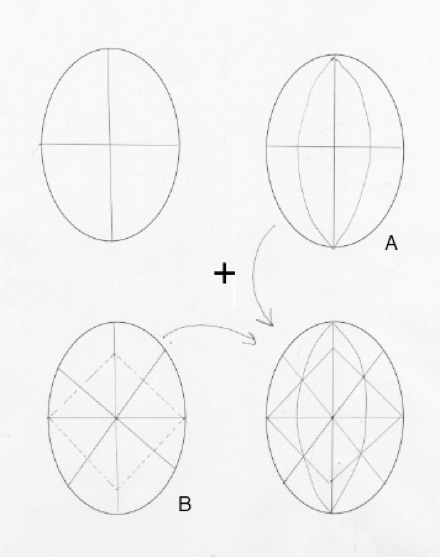Sorokolyn
Сорококлин
40 Triangles
Sorokolyn
Сорококлин
40 Triangles



One of the most traditional pysanka designs is called Сорококлин – “Forty Triangles (or Wedges)” Oddly enough, there are usually 48 triangles in the pattern, but there can be fewer or many more. The name is just a sort of shorthand, verbal laziness, the dropping of a syllable or two to make a more rhythmic and aurally pleasant word: “so-ro-ko-klyn” instead of “so-rok vi-syim klyn-tsiv.”
Its original pagan symbolism has been lost, but it is now taken to symbolize of the forty days of Lent, the forty martyrs, the forty days that Christ spent in the desert, and the forty life tasks of married couples (and no, I don’t know what these are). Instances of the number “40” occur very often in the Bible; some Bible scholars postulate that this is because “40” was used as a sort of shorthand for “very many,” which is quite appropriate in this usage as well.
Bear in mind, though, that the Sorokoklyn is not really a pattern as such, but a type of division of the pysanka. The egg is divided longitudinally eight ways, and each of these wedges is divided into 6 triangles.
To the pysankarka, one is superimposing two different divisions on top of one another: a basic division into eight longitudinally (A), and the division of the face of the egg into eight (as one would do to make an eight-pointed star) (B) but repeated four times instead of twice. It is much simpler than it sounds:

More detailed directions can be found in the “Divisions” section here.
If each of these triangles is further subdivided into two, a 96 triangle egg emerges; if some are collapsed together, a 24-triangle egg results. The patterns and colors in the triangles may be identical, alternate between two (most common), or be filled in to create larger designs.
Zenon Elijiw, in his book “Sixty Score Pysanky” has three plates of sorokoklyn eggs – two pages of true triangles, and one page of patterns based on the sorokoklyn division. Out of these 54 pysanky, only one has exactly 40 triangles, and it is not one of the traditional pysanky, but is a diasporan egg. It is as if someone had heard of the sorokoklyn but never seen one, and was determined to create an egg with exactly 40 triangles.
Kulzhynsky, in his album, has several examples of traditional sorokoklyn pysanky from the late 1800s:




Sorokoklyn pysanky do not seem to be particular to any one part of Ukraine; examples can be found in almost all its regions. In the gallery that follows are examples from my collection of the Sorokoklyn designs, including both modern and traditional patterns.
Even more will follow, as I really enjoy working with this traditional division.
Back to Regional Pysanky Home
Back to Traditional Pysanky HOME
Back to MAIN Pysanka home page.
Back to Pysanka Index.